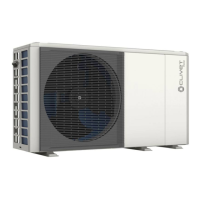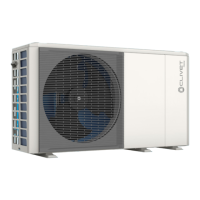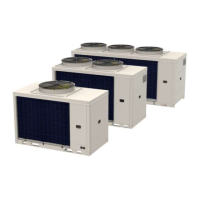42
Water connections
6.4.2 Using automatic frost protection valves
Automatic frost protection valves are available as an accessory and drain water from the circuit, preventing
freezing.
Depending on the higher activation temperature of the frost protection valves, it may be necessary to adjust
the minimum Cooling setpoint: carefully set it at least 2 °C higher than the minimum allowed (minimum default
cooling setpoint = 5 °C; recommended minimum setpoint with freeze protection valves = 7 °C) to prevent the
valves from draining the system when it is operating in Cooling mode.
W
CAUTION
In the presence of water with glycol, do not use frost protection valves as they may drain it from the circuit.
It is recommended to:
– install valves at all low points of the system (see the valve kit manual for further details on installation);
– provide normally closed valves, installed inside but as close as possible to the unit's water connections,
so as not to unnecessarily drain the entire system when the frost protection valves activate.
Refer to the frost protection valve kit manual for further details.
6.4.3 Protection of flow switch against frost
When the system is drained (manually or with an automatic frost protection valve), some water may remain in
the flow switch and not be drained by activation of the valves: at suciently low outdoor air temperatures it
can freeze. The flow switch must be removed and dried following the procedure below, and then reinstalled
in the unit.
Turn the flow switch anticlockwise and remove it, dry it carefully and then put it back in its original position.
Sizes 2.1~8.1
Fig. 34
It is advisable to carry out this operation every time the system is emptied and at the beginning of the winter
season if the unit is used as a process chiller (operation in cooling mode even in winter).

